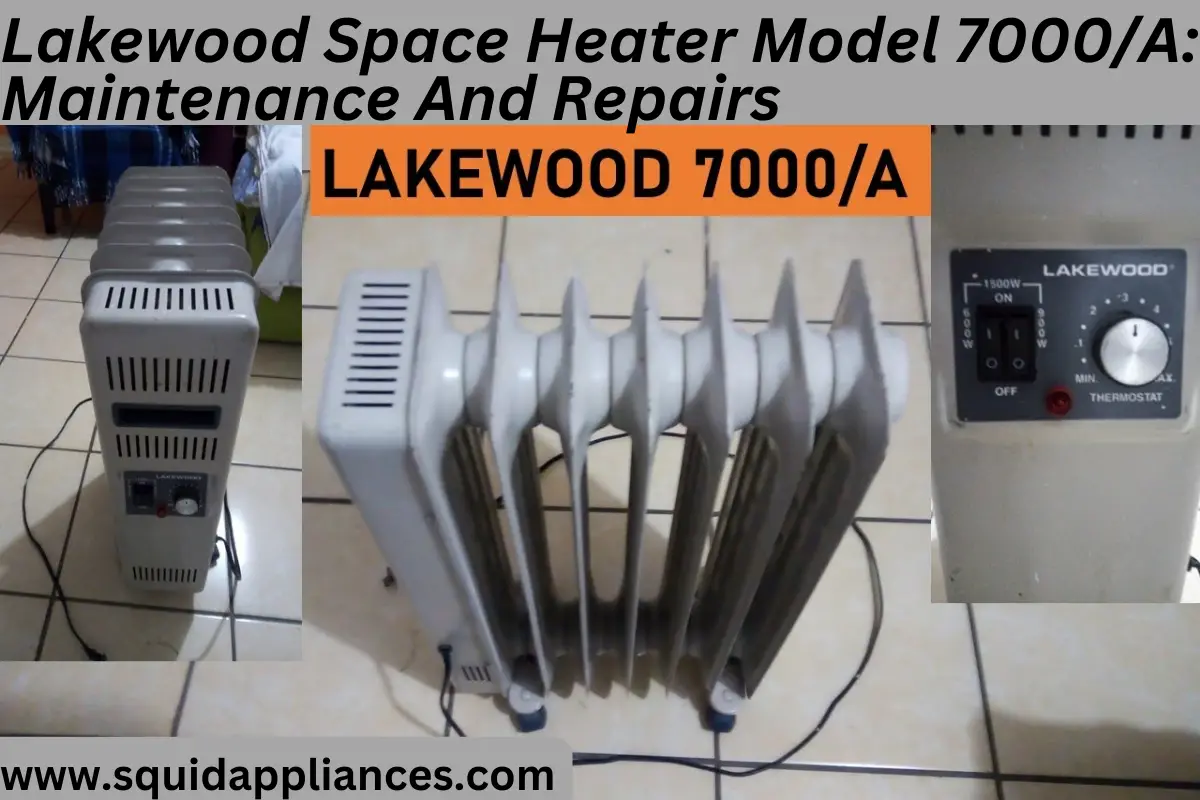Welcome to the comprehensive guide on maintaining and repairing the Lakewood Space Heater Model 7000/A.
As an experienced appliance repair technician, I understand the importance of keeping your space heater in optimal condition for efficient heating during those cold winter months.
In this article, we will delve into the intricacies of this particular model, providing you with detailed instructions and guidelines for proper maintenance and repairs.
What is the procedure of Maintenance And Repairs of Lakewood Space Heater Model 7000/A?
This guide provides comprehensive steps for maintaining and repairing the Lakewood Space Heater Model 7000/A. It covers cleaning, checking and replacing elements, troubleshooting issues, lubrication, and safety measures.
Key Takeaways
- Importance of regular maintenance and cleaning for optimal performance and longevity of the Lakewood Space Heater Model 7000/A
- Understanding and addressing common issues such as power supply problems, wiring connections, and thermostat issues promptly to ensure proper functioning
- Proper lubrication of moving parts to prevent rust and reduce friction, resulting in smoother operation of the heater
- Fire prevention measures, including keeping flammable materials away from the heater and plugging it directly into a grounded outlet for electrical safety.
Cleaning and Dusting the Heater
Make sure you’re regularly dusting and cleaning your Lakewood space heater model 7000/A to keep it running efficiently. Start by turning off the heater and unplugging it from the power source.
Carefully remove the heater filter and clean it with a vacuum or gentle brush to remove any accumulated dust or debris. If you notice any rust on the unit, use a soft cloth dampened with vinegar or lemon juice to gently remove it.
Checking and Replacing Heater Elements
Ensure your space stays warm and cozy by regularly inspecting and swapping out the heater elements. The lifespan of heater elements can vary depending on usage and maintenance.
The Lakewood Space Heater Model 7000/A may use different types of heater elements, such as ceramic, quartz, or coil. It’s important to understand the specific type used in your model to ensure proper replacement.
Replacing damaged or worn-out heater elements will help maintain optimal heating performance and extend the lifespan of your space heater.
Troubleshooting Common Issues
To troubleshoot common issues, start by checking the power supply and inspecting the wiring connections. Common electrical problems with the Lakewood Space Heater Model 7000/A can often be traced back to faulty power sources or loose connections.
Additionally, thermostat problems may arise, such as inaccurate temperature readings or a malfunctioning thermostat control. It’s important to address these issues promptly to ensure the proper functioning of the space heater and maintain optimal comfort in your living space.
Lubricating Moving Parts
One way to keep your Lakewood Space Heater Model 7000/A running smoothly is by regularly lubricating its moving parts. This helps prevent rust and reduce friction, ensuring optimal performance.
Start by unplugging the heater and removing any access panels. Locate the motor and fan assembly, then apply a few drops of oil to the bearings. Use a dry cloth to clean off any excess oil.
Reassemble the panels and plug in the heater for continued efficient operation.
Safety Tips and Precautions
Stay safe and protect yourself by following these important safety tips and precautions when using your Lakewood Space Heater Model 7000/A.
- Fire Prevention: Keep flammable materials at least three feet away from the heater to prevent any potential fire hazards.
- Electrical Safety: Ensure that the space heater is plugged directly into a grounded outlet to avoid electrical shocks or malfunctions.
- Regularly inspect the power cord for any signs of damage or fraying, and immediately replace it if necessary to maintain safe operation.
Frequently Asked Questions
How often should I clean and dust my Lakewood Space Heater Model 7000/A?
To ensure optimal performance of your Lakewood Space Heater Model 7000/A, it is recommended to clean and dust it every three months. Use a soft brush or vacuum cleaner to remove debris from the vents and filters. Regular cleaning will prevent clogs and improve air circulation.
Can I clean the heater elements myself, or do I need to call a professional?
You can clean the heater elements yourself using a soft brush or vacuum cleaner with a brush attachment. However, if you are not confident in your abilities, it is recommended to call professional cleaning services for optimal results and safety.
My Lakewood Space Heater Model 7000/A is not turning on. What could be the cause?
Possible Output:
If your Lakewood space heater model 7000/A is not turning on, several factors could be causing the issue. Check the power supply, thermostat settings, and inspect the heating elements for any damage or blockages.
Is it necessary to lubricate the moving parts of the heater regularly?
Lubrication frequency for moving parts in space heaters depends on usage and manufacturer recommendations. Lubrication methods may include applying a high-quality lubricant to bearings, motors, and other components using specific techniques outlined in the user manual or provided by the manufacturer.
What safety precautions should I take when using the Lakewood Space Heater Model 7000/A?
Safety measures when using the Lakewood Space Heater Model 7000/A include keeping it away from flammable materials, not leaving it unattended, and ensuring proper ventilation. Regular maintenance tips include cleaning the filter and checking for any loose or damaged parts.
Conclusion
In conclusion, proper maintenance and timely repairs are crucial for ensuring the optimal performance of the Lakewood Space Heater Model 7000/A.
By following the detailed instructions and guidelines provided, users can effectively clean and dust the heater, check and replace heater elements, troubleshoot common issues, and lubricate moving parts.






